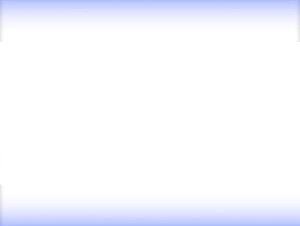Günther Uecker
 © Lothar Wolleh Estate, Berlin / Foto: Lothar Wolleh
© Lothar Wolleh Estate, Berlin / Foto: Lothar Wolleh 
George Brecht
A chemist by education and an inventor of hygiene articles, George Brecht wanted to use his art to ensure “that the details of everyday life, the random ...
read more 
Enrico Castellani
In 1959, using a regular, geometric arrangement of hazelnuts across which he stretched a monochrome canvas, Enrico Castellani established the fundamental ...
read more 
Heinz Gappmayr
One important factor is that Gappmayr’s works are not only made of language, i.e. the form of their presentation – be it textual, oral or on data carriers ...
read more 
Oskar Holweck
Bending, creasing, crumpling, folding, pressing, squeezing, stretching, scoring, tearing, slitting, cutting, sawing, singeing, burning – using various ...
read more 
Bruce Nauman
While teaching at the San Francisco Art Institute, Bruce Nauman teamed up with Robert Nelson and William Allen to probe the transitional realm between ...
read more 
Yoko Ono
In the exhibition:
Yoko OnoTHE WALK TO THE TAJ MAHAL, 1964/2021From six film scripts by Yoko Ono, Tokyo, June 1964 Facsimile print27,94 × 21,59 cm© Yoko ...
read more 
Mark Tobey
In his picture series White Writings, Mark Tobey creates labyrinthine rhizomatic entanglements out of repetitive, white brushstrokes on dark backgrounds. ...
read more 
Lucio Fontana
The museum is a conventional institution. Equally conventional is the practice of giving introductory talks at exhibition openings. We won’t waste our ...
read more 
Mirosław Bałka
You see what you see, almost nothing, that is, or merely a piece of wall, its surface a bit rough, slightly dirty here and there. A wall that people have ...
read more 
Ulrike Draesner
In the exhibition:
Ulrike DraesnerBe-Sprechbarkeit, 2021Space Essay, Text, White print on textileCourtesy of the artist
Additional information about ...
read more 
Katharina Fritsch
When, in 1987, as part of the Skulptur Projekte Münster, Katharina Fritsch exhibited her monochrome yellow Madonna Figure in the centre of Münster, positioning ...
read more 
Painter of White from the Outset
The work of the painter Raimund Girke might appear rather uniform at first sight. Upon closer inspection, however, his creative life, which spans some ...
read more 
Eugen Gomringer
Eugen Gomringer, who was hailed by Emmett Williams as the father of concrete poetry, saw the poetic text as “a visual object and utensil: an object of ...
read more 
Marcia Hafif
Marcia Hafif is one of a group of American artists who pursued a new form of painting in the United States and Europe in the 1970s. This new direction ...
read more 
Per Kesselmar
Per Kesselmar shows his fascination with light in his works. In his paintings, the Stockholm-based artist mixes different shades of white paint on large ...
read more 
Yves Klein
“We now reach April 1958 as we prudently and progressively move forward in time. I was preparing for The Pictorial Sensibility in the State of First Matter ...
read more 
Piero Manzoni
Nearly half of the entire oeuvre of the Italian conceptual artist Piero Manzoni consists of the “uncoloured” Achromes, a group of around 600 works. By ...
read more 
Sara Masüger
For each visitor to an exhibition, there are distinct expectations and charms that accompany the visit: children, experts, art lovers and culture vultures ...
read more 
David Ostrowski
In the space of only a few years, the Cologne-based painter has developed a body of work that approaches, in an almost uncanny way, the idea of a “degree ...
read more 
Nam June Paik
“Nam June Paik’s Zen for Film (1962–64) is a typical Fluxus work devised in the spirit of concretism. It consists solely of clear film leader of the type ...
read more 
Robert Rauschenberg (digital)
Letter from Robert Rauschenberg to Betty Parsons about his White Paintings, from Black Mountain College, Ashville, NC, postmarked October 18, 1951
Dear ...
read more 
Karin Sander
The tradition of mural painting goes back to prehistoric times and brings to mind static symbolic positionings and decorative designs created with various ...
read more 
Gregor Schneider
Gregor Schneider has been working since the mid-1980s with built and deconstructed spaces, voids and imperfections. At the heart of his artistic work ...
read more 
Jan J. Schoonhoven
Zero is not geared to geometry. Although this should be clear in itself, it becomes unmistakable when you compare Zero products with truly geometric objects. ...
read more 
Lothar Wolleh
Lothar Wolleh was a German photographer based in Düsseldorf. From 1959 to 1963, he studied under Professor Otto Steinert at the Folkwang School of Design ...
read more 
Ulrich Erben
Ulrich Erben’s group of early “white paintings” (1968–1978) is distinguished by their marginal areas of unpainted canvas, initially more or less unprepped ...
read more 
Hans Haacke
The German conceptual artist Hans Haacke developed an activist and critical artistic stance that has an ongoing relationship with its specific political ...
read more 
Astrid Klein
Astrid Klein uses photography and sculpture to address and question the “specific recognition of reality. Moreover, in her [...] paintings, she has staged ...
read more 
Otto Piene
“Light is the primary condition for all visibility. Light is the sphere of colour. Light is the vital substance of both humans and painting,”1 wrote Otto ...
read more 
Timm Ulrichs
Two black-and-white photographs – the naked upper body of Timm Ulrichs – one taken from the front, one from the back. Some parts of the body are covered ...
read more 
Rosa Barba
In her process-based research endeavours, Rosa Barba builds in large part on historical, sociopolitical or geological phenomena, which are incorporated ...
read more 
Qiu Shihua
At first glance, the paintings of Chinese artist Qiu Shihua seem to be monochrome, completely white canvases. Yet upon closer inspection, vast landscapes ...
read more 
Jochen Gerz
“...he brings work and the image back to their origin. ‘Weissʼ (‘whiteʼ) is composed of letters: signs. White is only understandable through its opposite: ...
read more